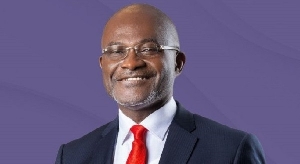Business News of Monday, 1 September 2014
Source: AfDB
Over 57% of W/Africans lack access to electricity — AfDB

African Development Bank (AfDB) has said that more than 57 percent of the people in West Africa are without access to electricity. The bank stated this in its “West Africa Monitor Quarterly," for the second quarter of 2014 report.
It said that the percentage approximated the average for sub-Saharan Africa,” but extremely low compared with 23 per cent in the developing world and 18 percent globally.”
According to the report, with inadequate generation capacity, low electrification, and sporadic, unreliable and expensive service, energy is at the top of questions requiring adequate policy intervention.
It explained that access rates varied from country to country, with eight per cent in Niger and 15 per cent in Burkina Faso, Liberia, Guinea, Sierra Leone and Guinea-Bissau. The report added that about 70 per cent of the population in Ghana had access to electricity while 87 per cent were hooked to supply in Cape Verde.
It also said that there were disparities in access to electricity between rural areas and urban centres in the sub-region, with urban dwellers having more access than rural people.
According to the bank, the trend is more glaring in Ghana where 87 per cent of urban dwellers have access to electricity, compared with the five per cent in rural areas.
It disclosed that West African countries had joined the Sustainable Energy for All Initiative towards achieving universal energy access by 2030, with renewable energy shared improvement and efficiency.
It pointed out that the sub-region had great potential to expand its use of renewable energy sources, which included modern biomass, hydropower, solar, and wind and had remained untapped.
“Using such sources would help to expand access while reducing reliance on traditional biomass, increase reliability and affordability, and contribute to climate change mitigation. Hydropower in West Africa has an estimated potential of 25,000 megawatts, yet only 16 per cent has been exploited and despite its wealth in waterways, it only holds 214 dams out of 1,282 dams in Africa. In addition, several in-country lakes and dams hold promise for renewable energy development,” it said.
The report said that the Volta River held great potential for Burkina Faso, Ghana, and Togo while Lake Chad could be used to serve Niger, Nigeria, Cameroun and Chad.
It acknowledged that solar power projects were spreading across the sub-region, including the 155 MW Nzema solar power plants in Ghana, one of the largest in Africa.
The bank revealed that Burkina Faso, Ghana and Guinea had potential for hydro-power while Mali and Niger had for solar energy, and Cape Verde, Gambia and Senegal for wind resources.










